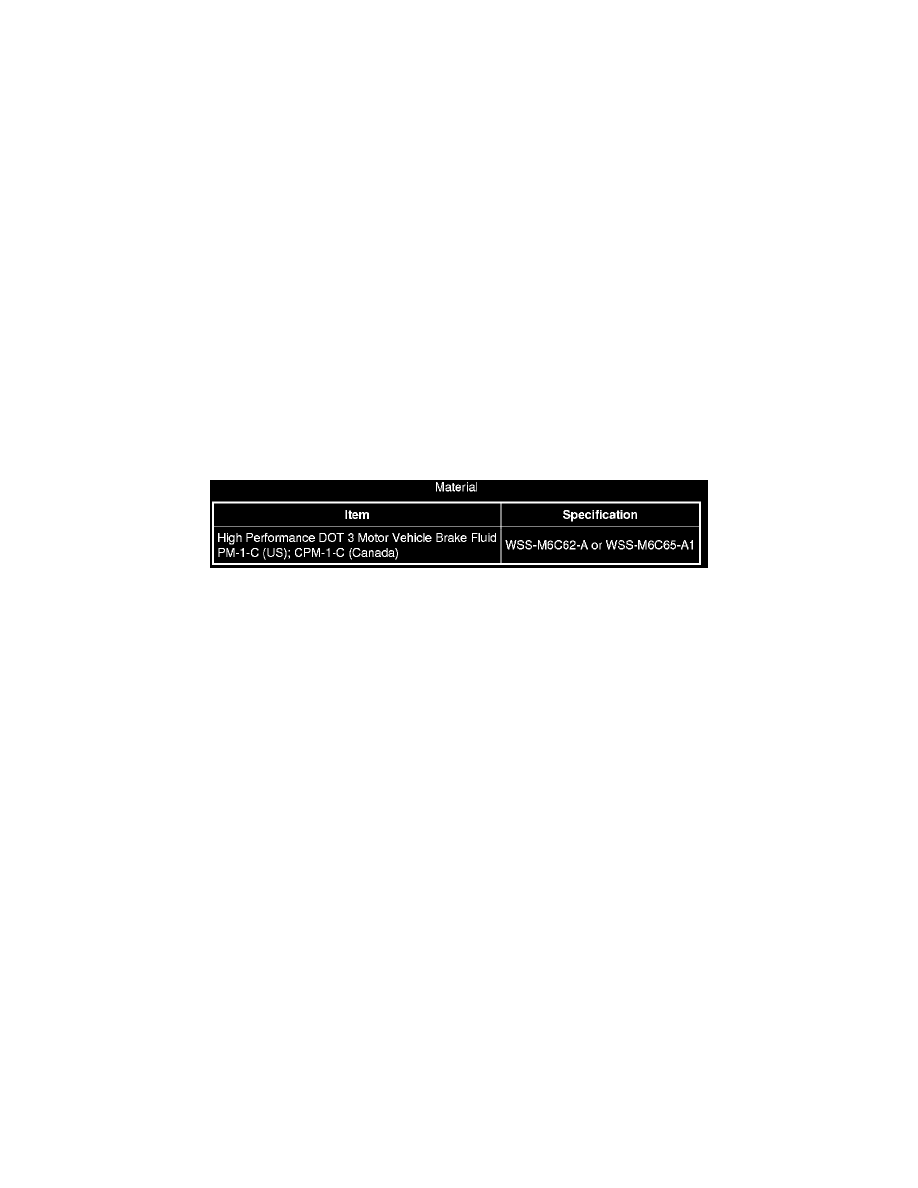Taurus AWD V6-3.5L (2009)

1. Remove the brake pads. For additional information, refer to Brake Pads See: Brake Pad/Service and Repair/Front Disc Brake/Brake Pads.
2. Remove and discard the 2 brake caliper anchor plate bolts and remove the brake caliper anchor plate.
-
Make sure the steering stop is supported when the brake caliper anchor plate bolts are removed.
3. NOTE: Do not remove the anchor plate guide pins. The guide pins are press fit to the brake caliper anchor plate. If the guide pins are damaged, a
new anchor plate must be installed.
Inspect the brake caliper anchor plate assembly.
-
Check the guide pins and boots for binding or damage.
-
Install a new brake caliper anchor plate if it is worn or damaged.
Installation
1. Position the brake caliper anchor plate and steering stop on the wheel knuckle and install 2 new bolts.
-
Tighten to 150 Nm (111 lb-ft).
2. Install the brake pads. For additional information, refer to Brake Pads See: Brake Pad/Service and Repair/Front Disc Brake/Brake Pads.
Brake Caliper
Brake Caliper
Removal and Installation
WARNING: Do not use any fluid other than clean brake fluid meeting manufacturer's specification. Additionally, do not use brake fluid that
has been previously drained. Following these instructions will help prevent system contamination, brake component damage and the risk of
serious personal injury.
WARNING: Carefully read cautionary information on product label. For EMERGENCY MEDICAL INFORMATION seek medical advice.
For additional information, consult the product Material Safety Data Sheet (MSDS) if available. Failure to follow these instructions may result
in serious personal injury.
NOTICE: Brake fluid is harmful to painted and plastic surfaces. If brake fluid is spilled onto a painted or plastic surface, immediately wash it
with water.
NOTICE: Do not allow the brake fluid to come in contact with the adhesive backing on the brake pads. This may prevent the brake pad
adhesive surface from bonding with the brake caliper. If brake fluid is spilled onto the brake pads, new pads must be installed.
NOTICE: Use only specified brake parts cleaner. Use of other cleaners may leave a residue on the brake caliper preventing the brake pads
adhesive surface from bonding with the brake caliper.
NOTE: The brake caliper and brake flexible hose are serviced as an assembly.
1. Remove and discard the brake pads. For additional information, refer to Brake Pads See: Brake Pad/Service and Repair/Rear Disc Brake/Brake
Pads.
2. Disconnect the parking brake cable from the subframe bracket and the caliper.
-
Position the parking brake cable aside.
3. Clean and inspect the disc brake caliper.
-
If leaks or damaged boots are found, install a new disc brake caliper.
4. Disconnect the brake tube fitting from the brake flexible hose.
-
To install, tighten to 17 Nm (150 lb-in).
